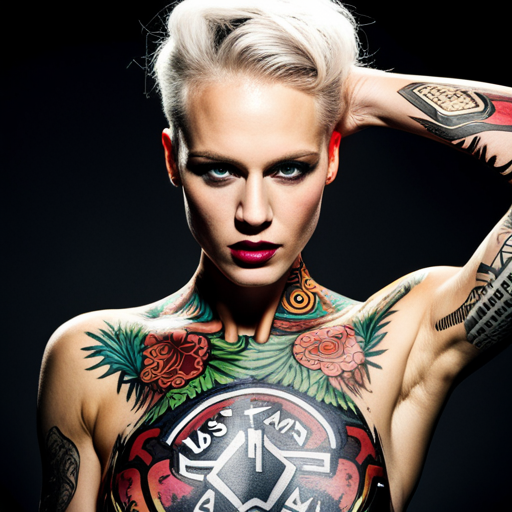
TattooS
A guide to exploring Various Tattoo Styles
American Traditional Style

Neo-Traditional Tattoo


Japanese Style
Irezumi, otherwise known as Japanese style tattoos, have their origins in the Edo period of Japan (1603-1868). These tattoos are known for their vivid colors, illustrative linework, and use of negative space. Popular motifs include images of Japanese folklore, samurai warriors, Buddhist gods, dragons, tigers, snakes, koi fish, kitsune, phoenixes, and foo dogs. Such designs can be done alone or accompanied with natural elements like water and flowers.
When it comes to Japanese tattoos, they are usually bigger and are typically done on the back, arms, chest, or legs. It is not unusual to see full-body Japanese tattoos, yet they can also be applied as small tattoos to other parts of the body.
Blackwork Tattooing
The Blackwork tattoo style is characterized by tattoos made with only black ink. These designs are usually composed of thick lines and negative space. Any tattoo made without the use of shading, grey, or coloured ink falls under this category. This style allows for a great deal of creativity and exploration, from tribal tattoos to illustrative, geometric, abstract, portraiture, and lettering tattoos.


Watercolors Tattoo Style
A guide to exploring Various Tattoo Styles
Bright pigments are blended together to craft delicate washes of colour on the skin in Watercolour tattoos, which offer a refreshing change from the popular bold, dark linework seen in many other styles of tattooing. Creating a successful Watercolour tattoo requires a high level of technical skill, so it's important to do your research or view a portfolio of a prospective artist's Watercolour tattoos before booking an appointment. Although Watercolour tattoos are less painful to get due to the lack of pigment being injected deeply into the skin, they are more prone to fading faster than other styles such as dark, shaded or Blackwork tattoos.
Minimalistic Style


Geometric Tattoos
A guide to exploring Various Tattoo Styles
The Geometric tattoo style is renowned for its accuracy and is composed of various shapes such as rectangles, triangles, circles, squares, diamonds, and lines. These designs usually do not come with shading and were traditionally used to signify a spiritual meaning. Nowadays, they are used to provide a sense of equilibrium and balance. There are compositions which solely consist of a combination of these shapes and also those that reimagine existing tattoos with the addition of geometric elements, such as a lion tattoo with a diamond-studded face. They are able to add a modern, refined, and proportional allure to conventional tattoos and blend with other tattoo styles from Minimalist to Watercolour.
Trash Polka


Realism
The Realism tattoo style is quite straightforward; it is designed to appear as a realistic image. This trend has been popular since the 1950s and remains one of the most requested tattoo styles today. It can be inked in a range of hues and often has intricate detailing or shading. Popular selections for this tattoo style can include depictions of celebrities or family members, animals, a desired object or location, and nature-related motifs.
Portrait style


Surrealism
The Surrealism tattoo style can be seen as a combination of Illustrative and Realism tattoo styles. These designs are inspired by the avant-garde art movement and feature faces, animals, scenery and everyday objects with a whimsical twist. Distorted figures, shapes, and illogical juxtaposition as well as dream-like symbols are incorporated to create a feeling of fantasy and hyper-realism. Usually Surrealism tattoos are done with black or grey ink, although coloured inks are not uncommon.
Linework style
This type of tattoo is known for its simplistic, one-colored and inconspicuous look. Line Art tattoos are identified as a fashion that uses crisp lines and a solitary ink color to form any pattern. Most of these tattoos are created using one continuous line with a lot of open space to make the details of the design stand out. The construction of a Line Art tattoo consists of many curves and overlapping details. The needle used may be of a different thickness, depending on how strong the linework should be. A lot of Line Art tattoos follow a minimalistic tattoo style with geometric or abstract shapes. Common elements include distorted faces or figures, animals, portraits and floral designs. The effortlessness of this tattoo style means that Line Art tattoos can be done in a shorter session and will likely be less painful to get than a traditional tattoo.

